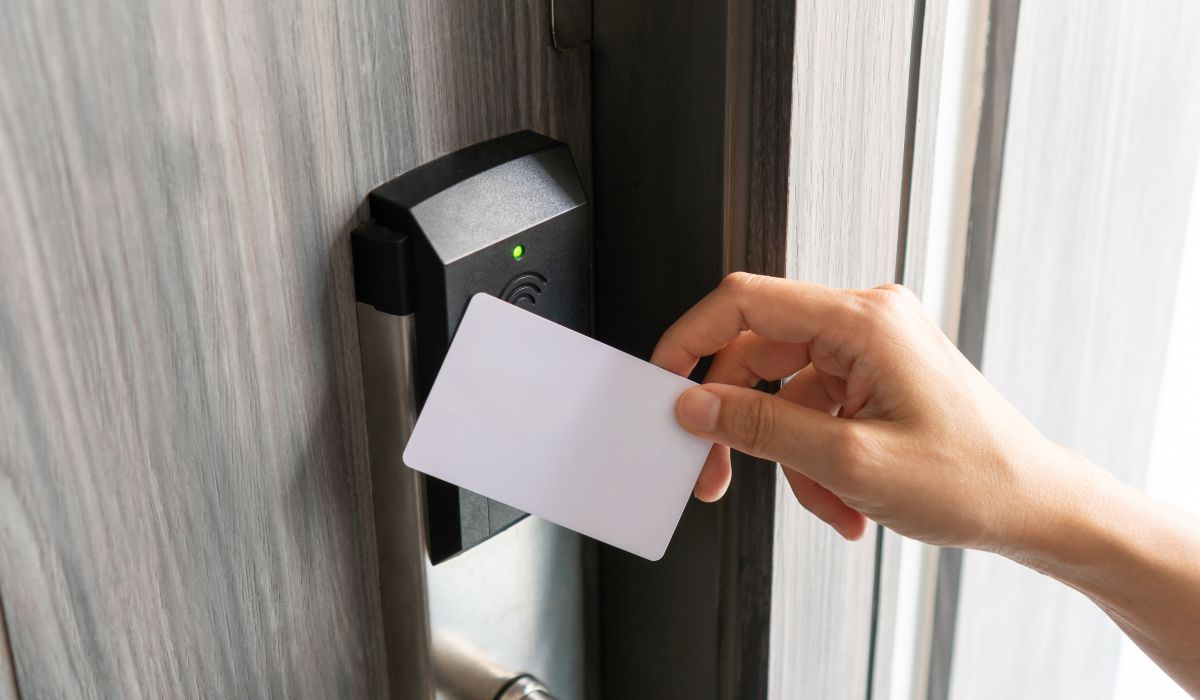Access card readers have a significant impact in guaranteeing security and convenience in different areas, from corporate offices to residential complexes. As technology keeps on developing at a remarkable speed, access card readers are likewise going through change to fulfill the needs of a quickly impacting world.
In this article, we will investigate the arising patterns that are molding the fate of access card readers, from improved security highlights to consistent integration with arising technologies.
Biometric Integration: A Stage Past Conventional Credentials
While access card readers have customarily depended on actual cards or key coxcombs, the integration of biometric authentication is a critical pattern that is gaining footing. Biometric techniques, for example, fingerprint recognition, facial recognition, iris scanning, and even voice recognition offer a more significant level of security and convenience.
Biometric data is novel to people, making it fundamentally more testing to repeat contrasted with customary access cards. This pattern improves security as well as disposes of the requirement for conveying actual cards, lessening the gamble of card misfortune or burglary. Additionally, biometric authentication can be consistently incorporated into existing access control systems, allowing for a more comprehensive security approach.
Mobile Device Integration: The Convenience of Smartphone Access
The omnipresence of smartphones has opened up additional opportunities for access control systems. The capacity to utilize smartphones as virtual access cards is a pattern that offers unmatched convenience. With the ascent of Near Field Communication (NFC) and Bluetooth Low Energy (BLE) technology, smartphones can speak with access card readers, allowing users to just tap or be in closeness to gain entry.
Mobile door access system offers a few benefits, including the capacity to remotely oversee access consents, track entry logs continuously, and even award temporary access to guests. Coordinating mobile devices with access card readers smoothes out the entry interaction as well as gives a more versatile platform to access control management.
IoT Integration: Creating Smart Access Systems
The Internet of Things (IoT) is reforming different enterprises, and access control is no exemption. Access card readers outfitted with IoT technology can speak with different devices and systems, creating a durable and intelligent access management ecosystem. For example, access card readers can be associated with building mechanization systems, changing lighting, temperature, and other environmental factors based on the user’s presence.
IoT integration likewise empowers prescient examination, allowing access control systems to distinguish examples and irregularities in user conduct. This can be especially significant in distinguishing potential security dangers or unapproved access endeavors. The cooperative energy between access card readers and IoT technology upgrades both security and functional efficiency.
Cloud-Based Solutions: Flexibility and Scalability
Cloud technology has changed how organizations deal with their data and applications, and access control systems are no special case. Cloud-based access card readers offer flexibility, scalability, and remote management abilities. Access consents and user data can be put away securely in the cloud, allowing administrators to deal with the system from any place with an internet association.
Cloud-based solutions likewise empower fast updates and fixes, guaranteeing that access card readers are dependably in the know regarding the most recent security measures. This kills the requirement for manual updates on individual devices and diminishes the gamble of weaknesses because of obsolete firmware.
AI and Machine Learning: Enhancing Security and User Experience
Artificial Intelligence (AI) and Machine Learning (ML) are transforming access card readers by altogether enhancing security and user experience. AI-powered systems can learn and adjust to user conduct, distinguishing peculiarities that could show unapproved access endeavors. This proactive methodology can assist with forestalling security breaks before they happen.
Machine Learning algorithms can likewise upgrade access control processes. For example, they can anticipate top utilization times and apportion assets in like manner, limiting clogs and further developing user experience during occupied periods. Furthermore, AI can examine video footage from surveillance cameras to confirm an individual’s character before conceding access, adding a layer of security.
Blockchain for Immutable Access Records
Blockchain technology, known for its security and permanence, is finding its direction in access control systems. By using blockchain, access records can be put away in a tamper-proof and transparent way. This guarantees that access logs are reliable and can be inspected without worries of control.
Blockchain likewise allows for decentralized access control, where users can have more control over their access consents without depending on a focal power. This pattern adjusts well to the standards of decentralization and straightforwardness that blockchain technology advances.
Environmental Considerations: Energy Efficiency and Sustainability
As the world turns out to be more aware of environmental sustainability, access card readers are additionally advancing to be more energy-productive. Smart access systems can utilize sensors to detect occupancy and change lighting and climate control likewise, diminishing energy utilization when regions are not being used.
Furthermore, the materials and assembling cycles of access card readers are being examined for their environmental effects. Sustainable materials and plans that focus on life span and recyclability are gaining a foothold in the business.
Privacy and Data Security: Balancing Convenience and Protection
While convenience and security are critical, the privacy of user data likewise remains a huge concern. As access card readers gather and cycle individual data, guaranteeing data privacy and consenting to guidelines, for example, GDPR is fundamental. Future patterns in access card readers will probably zero in on areas of strength for consolidating protocols, secure data storage practices, and user-friendly ways of overseeing data authorizations.
Multi-Factor Authentication (MFA): Reinforcing Access Security
Chasing more grounded security measures, access card readers are progressively embracing multi-factor authentication (MFA) techniques. MFA joins at least two authentication factors to check a user’s character, making it fundamentally harder for unapproved people to gain access. This can include a mix of something the user knows (like a secret word or PIN), something they have, (for example, an access card or smartphone), and something they are (biometric data).
Executing MFA in access card readers improves security by adding a layer of protection. Regardless of whether a vindictive entertainer figures out how to gain a user’s access card or credentials, they would in any case have to sidestep extra authentication factors, making unapproved access considerably more troublesome.
Virtual and Augmented Reality Integration: Rethinking User Experience
Virtual Reality (VR) and Augmented Reality (AR) are not generally restricted to entertainment and gaming; they are finding useful applications in different enterprises, including access control. Access card readers are investigating the integration of VR and AR technologies to rethink the user experience and further develop security protocols.
Envision a situation where users can wear AR glasses or use VR headsets to connect with access card readers. These devices can show extra data about the area they are entering, for example, crisis leave courses or significant well-being guidelines. Additionally, facial recognition technology can be improved by utilizing AR overlays, assisting the security workforce with recognizing authorized individuals continuously.
Conclusion
The fate of access card readers is without a doubt thrilling and extraordinary. From biometric integration to IoT networks, AI-powered security to blockchain-upgraded straightforwardness, access control systems are going through a profound development. These patterns all in all aim to give improved security, convenience, and flexibility, taking care of the different necessities of modern work environments, residential complexes, and public spaces.
Read More:
Choosing the Right IP Security Camera for Your Specific Needs

